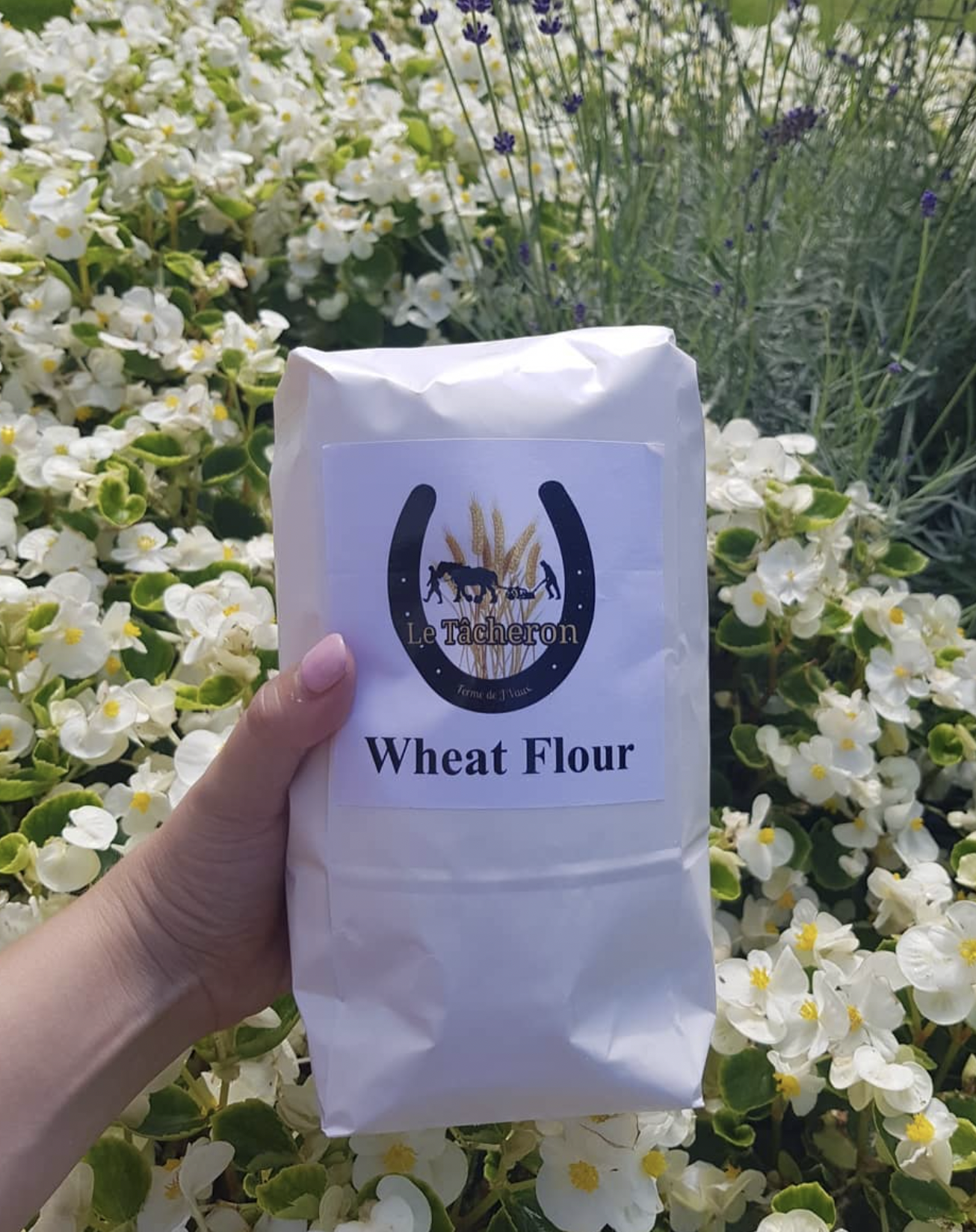Col Le Couteur Wheat
Scientific Name: Triticum aestivum 'Col Le Couteur'
Flavour: Col Le Couteur wheat has a rich, nutty flavor with subtle hints of sweetness. It offers a pleasant and robust taste that adds depth to baked goods and other dishes.
Growing Season: Col Le Couteur wheat is typically grown as a winter wheat variety. It is planted in the autumn and harvested in the following summer or early autumn, depending on the specific growing conditions and climate.
Native Region: Wheat, including the Col Le Couteur variety, is native to the Fertile Crescent region of the Middle East. It has been cultivated and adapted to various regions around the world, including the British Isles.
Traditional Recipe: Whole Grain Bread with Col Le Couteur Wheat
Ingredients:
3 cups Col Le Couteur whole wheat flour
1 1/2 cups warm water
2 tablespoons honey or maple syrup
2 tablespoons olive oil
2 teaspoons active dry yeast
1 teaspoon salt
Instructions:
In a large mixing bowl, combine the warm water, honey or maple syrup, and yeast. Let it sit for about 5 minutes until the yeast becomes foamy and activated.
Add the Col Le Couteur whole wheat flour, olive oil, and salt to the bowl. Mix until a sticky dough forms.
Turn the dough out onto a floured surface and knead for about 10 minutes until the dough becomes smooth and elastic.
Place the dough in a greased bowl and cover it with a clean kitchen towel. Allow it to rise in a warm place for about 1 to 1 1/2 hours, or until doubled in size.
Preheat the oven to 400°F (200°C). Place a baking stone or baking sheet in the oven to preheat as well.
Punch down the dough to release any air bubbles. Shape it into a loaf or desired bread shape.
Transfer the shaped dough onto a parchment-lined baking sheet or preheated baking stone.
Bake for about 30-35 minutes or until the bread is golden brown and sounds hollow when tapped on the bottom.
Remove the bread from the oven and let it cool on a wire rack before slicing and serving.
Health Properties: Col Le Couteur wheat retains the natural goodness of whole wheat, including dietary fiber, vitamins, minerals, and antioxidants. It is a good source of complex carbohydrates and provides essential nutrients for energy, digestion, and overall well-being. Whole grain wheat is associated with numerous health benefits, such as improved heart health, better blood sugar control, and enhanced digestive health.
Growing Technique:
Soil Preparation: Prepare the soil by removing weeds and incorporating organic matter, such as compost or well-rotted manure. This helps improve soil fertility, structure, and moisture retention.
Planting: Sow Col Le Couteur wheat seeds in well-prepared soil in autumn, ideally around September or October, depending on the specific climate and region. Broadcast the seeds evenly over the soil surface and lightly rake them in.
Spacing: Space the seeds or seedlings according to the recommendations provided on the seed packet or by the seed supplier. This ensures adequate air circulation and prevents overcrowding.
Watering: Provide consistent moisture to the growing wheat plants, especially during dry periods. Avoid overwatering, as it can lead to waterlogged conditions and potential disease issues.
Weed Control: Keep the growing area free from weeds that can compete with the wheat plants for nutrients, water, and sunlight. Regularly inspect the crop and manually remove any weeds as necessary.
Fertilizing: Test the soil to determine if additional fertilization is needed. Apply a balanced organic fertilizer or a specific wheat fertilizer according to the recommended rates. Follow the application instructions provided by the manufacturer.
Disease and Pest Management: Monitor the wheat crop for common diseases and pests, such as rust, powdery mildew, aphids, or wheat flies. Use appropriate cultural practices, organic pest control methods, or approved treatments to manage any issues that arise.
Harvesting: Harvest the wheat when the plants have turned golden brown and the heads are fully matured. Use a scythe or sickle to cut the wheat stalks at ground level. Bundle the harvested wheat and hang it upside down in a dry and well-ventilated area to dry fully.
Threshing and Winnowing: Once the wheat is dry, separate the grain from the chaff through threshing and winnowing. Threshing involves removing the grains from the seed heads, and winnowing involves separating the grains from the lighter chaff by allowing them to fall and blow away in the wind.
Storage: Store the harvested and processed wheat grains in clean, dry, and airtight containers to protect them from moisture, pests, and spoilage. Use the grains as needed or grind them into flour for baking or other culinary purposes.
